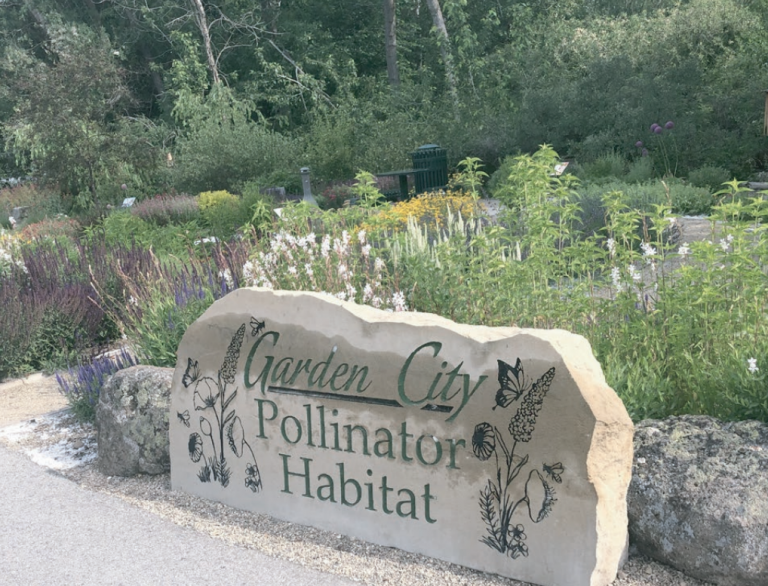Be a Bee City!

According to Peter Kageyama, author of the topselling book, For the Love of Cities, people know that on a deeper level, flowers, trees, parks, gardens, and greenspaces represent necessary elements to making places actually livable. A city without trees and gardens is not a city that anyone would want to live in.
These green elements are part of the essential INFRASTRUCTURE of our places. Yet unlike the obvious infrastructure such as roads, bridges and power grids, these green elements evoke a deeper physiological and emotional response. Think of the calm we feel in a park or the sense of wellness from a walk along a trail. This is called “biophilia” – the innate tendency of human beings to seek out and connect with nature and it is hardwired into us.
There are many ways to make Idaho’s cities more livable places. In Garden City, a dedicated cadre of volunteers had an idea for the project but with no backing. Judy Snow and her husband are members of the Chinden Gardener’s Club and just started talking to people about the possibility of developing a demonstration garden and becoming members of a larger organization and promoting healthy living through beautiful gardens. The club found grants and support from charitable organizations, won the support of Mayor Evans and the city council, and brought their idea to fruition. The idea was born to become a Bee City USA.
One in every three bites of food we eat is courtesy of insect pollination. Equally important, 90% of all wild plants and trees rely on pollinators for the survival of their species. Not surprisingly, in 2007 when honey bee colonies started disappearing, beekeepers and non-beekeepers alike became very concerned. While less is known about native wild bees and other pollinators, we do know that entire species are disappearing at alarming rates due to the same enemies as honey bees – loss of habitat essential for food and shelter, diseases and parasites, and inappropriate pesticide use.
There are requirements to be a Bee City USA, just as there are in the Tree City USA program that is supported by the Idaho Community Forestry Program. Both programs have an end goal of making communities better places in which to live, work and recreate. And, neither program would be successful without the spirit of volunteerism that seems prevalent in Idaho cities.

